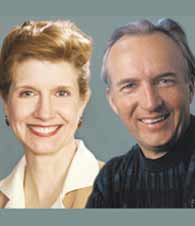described
them, are similar to what we call
'Below Zero' customers (or BZs)
customers who for one reason or
another will end up costing you more
money to serve than you can earn in
profit from serving them. You can do
nothing to salvage this situation for
your business unless you track
customer transactions and your own
costs, at least enough to be able to tell
the highly profitable customers from
the not-so-profitable, and the not soprofitable
fromthemoney-losing BZs.
But assuming you do have the data,
then there are strategies even big
companies can follow in dealing with
customers like this.
First, you should consider
imposing service fees on all services,
even the ones you used to give away
for free. You can alwayswaive the fees
for good customers, but imposing
reasonable fees till have the effect of
reducing demand for free services by thosewho don't really need them, and
also recovering some of the costs of
providing them.
A second strategy would be to
change the overall value proposition or
the business model in some way to
realign costs and revenues. Bundle
your products and services differently,
or change the channel structure, or the
sales compensation, or something like
that.Most large firms, for instance, pay
sales commissions based on product
profitability. But why not pay higher
commissions based on customer
profitability instead? This would be
incentive to the salesforce to focus on
and leverage the higher profit
customers, and would probably mean
fewer low-value customers showing
up in your customer base.
And third, some businesses
actually encourage BZs to patronize
other firms. You can do this with a
polite letter, perhaps even offering a
small parting gift of appreciation. But
then you have to stick to it.
What are the best companies in the
world for CRM best practices? What
other companies can learn fromthem?
An easy example frequently cited is
Amazon.com. If you are a regular
Amazon customer (as I am), then
when you see a book you like you just
click on it and it comes automatically
to your house. Amazon already has
your address and your credit card
number, so it's very easy to order the
book. For any given book, you will
almost certainly find it cheaper
somewhere if you look hard enough.
But that would mean re-entering all
the information, and if you feel that
Amazon's "recommendation" service
has any value at all, then buying the
book from some other site will erode
its effectiveness.
We know a credit card company
that offers its card in more than 2
million varieties. These are all the
possible results of combining just five
different modules. Each module
(interest rate, annual fee, sport team
affiliation, reward structure, etc.), has
a dozen or more possible 'settings'.
When you multiply the possibilities
together, the card can be delivered to
any particular customer in more than
2 million ways. But actually, the only
thing the card company is doing is
specifying a few dozen options. Then
the technology of interaction and
process management digitally
combines different options into the
final card product.
Inmost such situations, the actual
cost of delivering finished goods to the
customer will be less sometimes
very much less than standard
manufacturing. For instance, HP no
longer makes separate printers with
their own individual power supplies
for each different region of the world,
for instance. Instead, the company
makes a single printer engine that can
accommodate a number of different
power supplies, then it ships these
engines to their destination where the
final power supplies are installed. HP
did this to save costs. The increased
cost of a 'standardized' printer engine
is more than offset by the reduced
inventory costs and wastage of all the
separately manufactured machines
that could not be transferred fromone
region to another.
The same kinds of cost savings
apply to service delivery. St. George
Bank in Australia has cash machines
that remember customer requests. So
you put your PIN code in and the
machine might ask you "would you
like your 'regular' $100 cash, no
receipt?" Just push 'yes' and you are
finished. No need to step through the series of questions—deposit,
withdrawal or transfer? checking or
savings or moneymarket? receipt or
no receipt? From the customer's
standpoint it is much more
convenient to be served individually
like this. But from the bank's
standpoint it's less costly too, because
each ATM can serve more people in
the same amount of time.
In India, Tata Telecom's customer
strategy and technology investment
seem to be paying dividends. The
company has transformed itself from
India's largest PBX equipment
manufacturer to the only provider of
converged solutions for enterprises
voice, video and data with a yearon
year annual growth rate of 25%. A
technology platform, specifically
mySAP CRM, played a critical role in
facilitating this growth. The
company's Rs. 8.3 cr ($1.85 mn)
investment in mySAP CRM will yield
a net return ofRs. 12.8 cr ($2.85mn) or
an internal rate of return of 129%over
two years. Most benefits are in sales,
where productivity improvements
from better data capture and
forecasting have led to increased
revenue.
